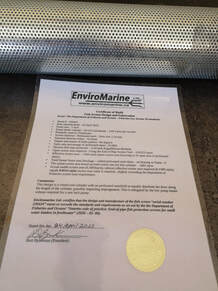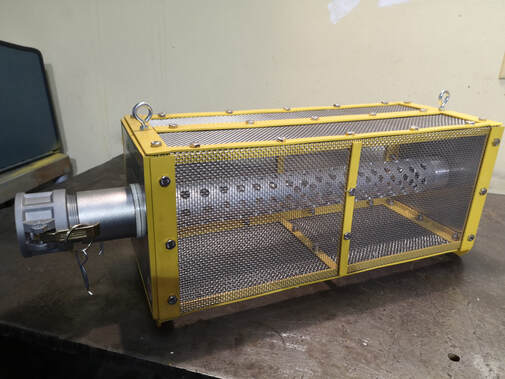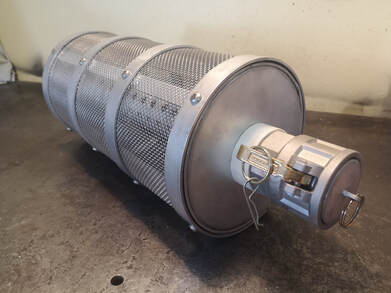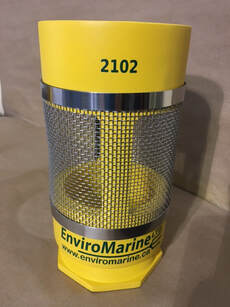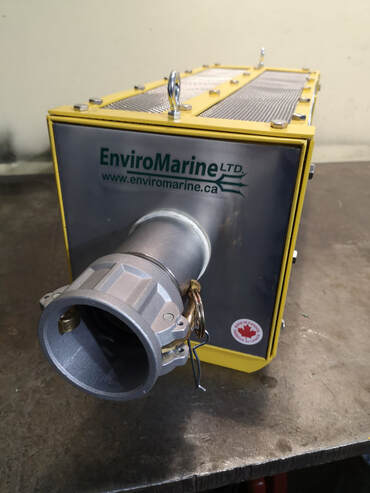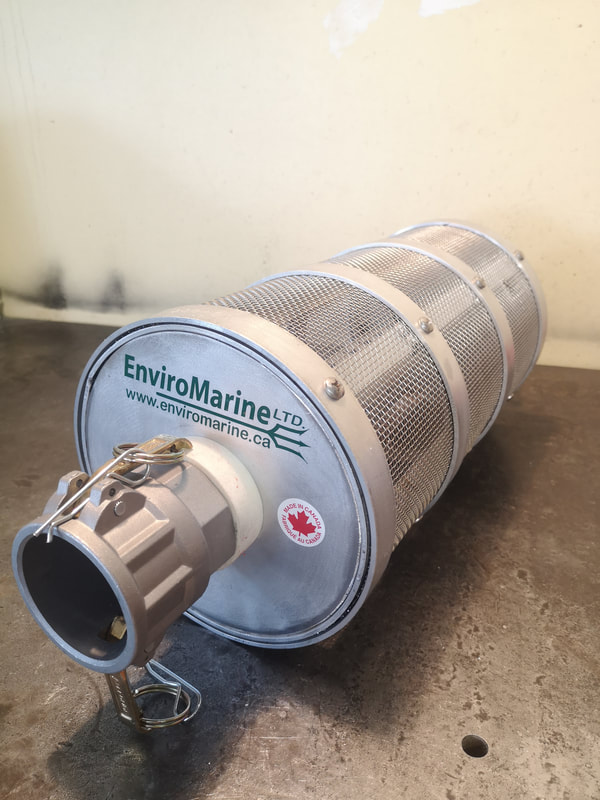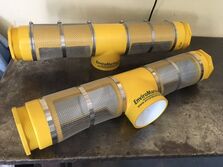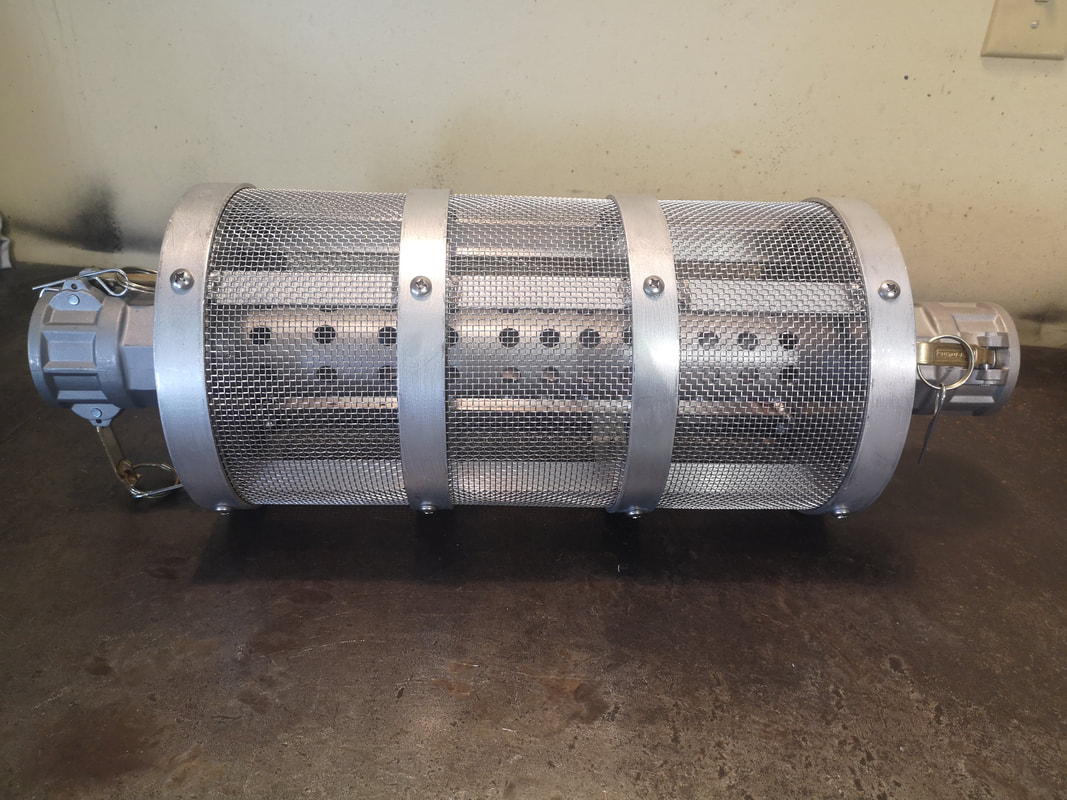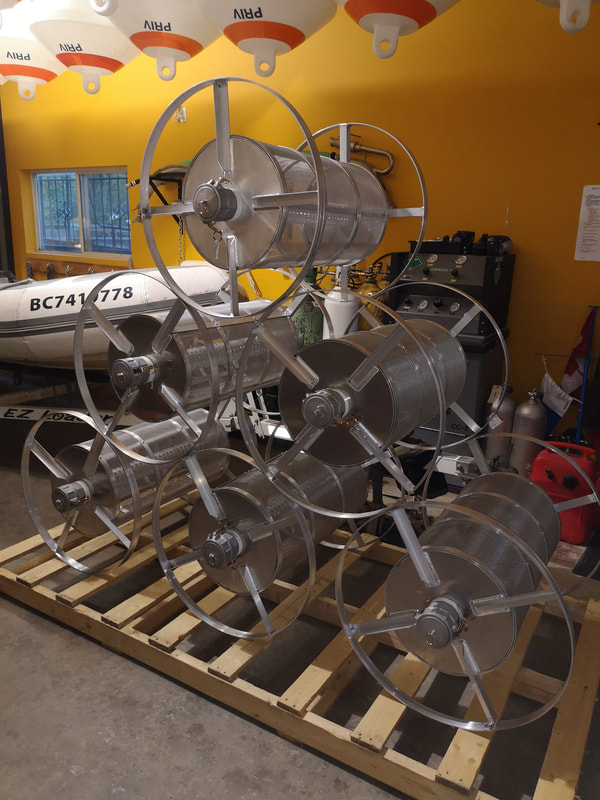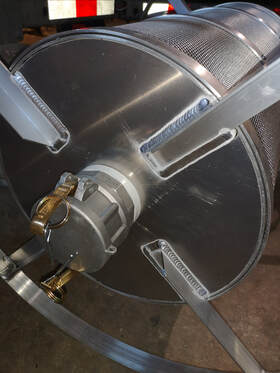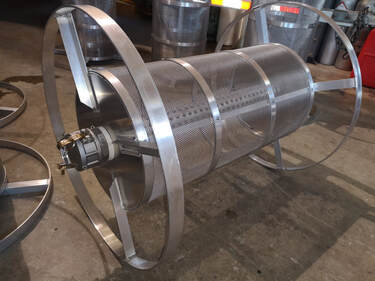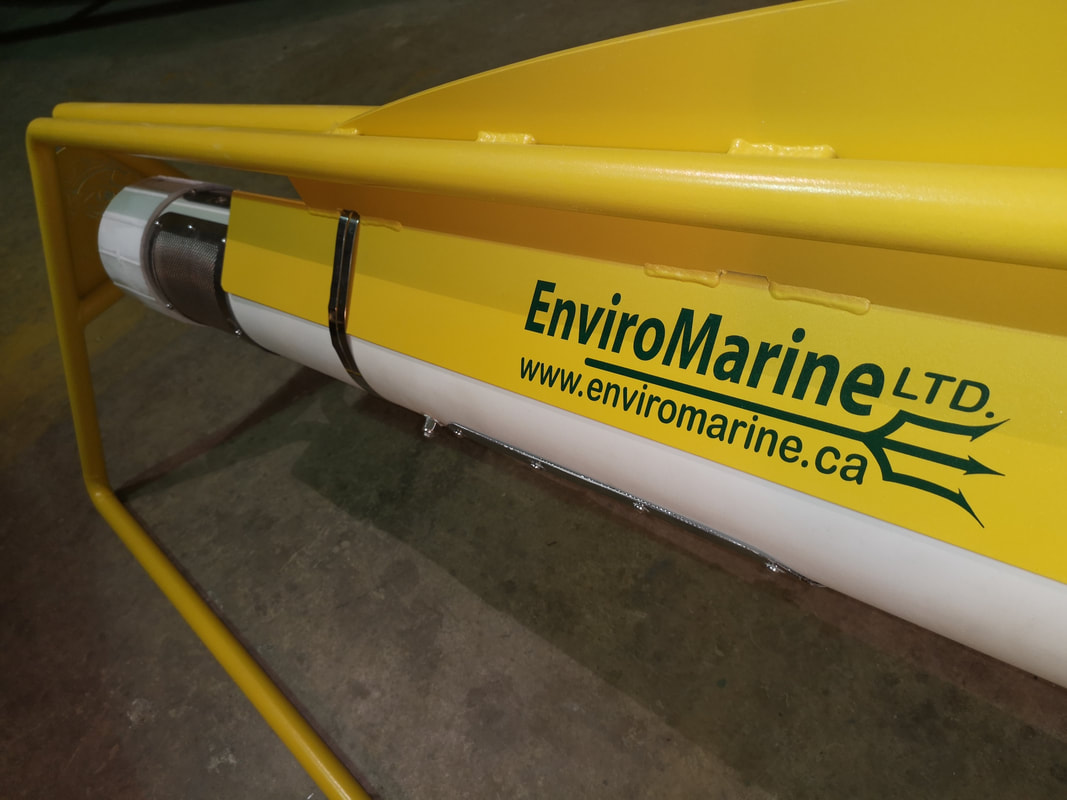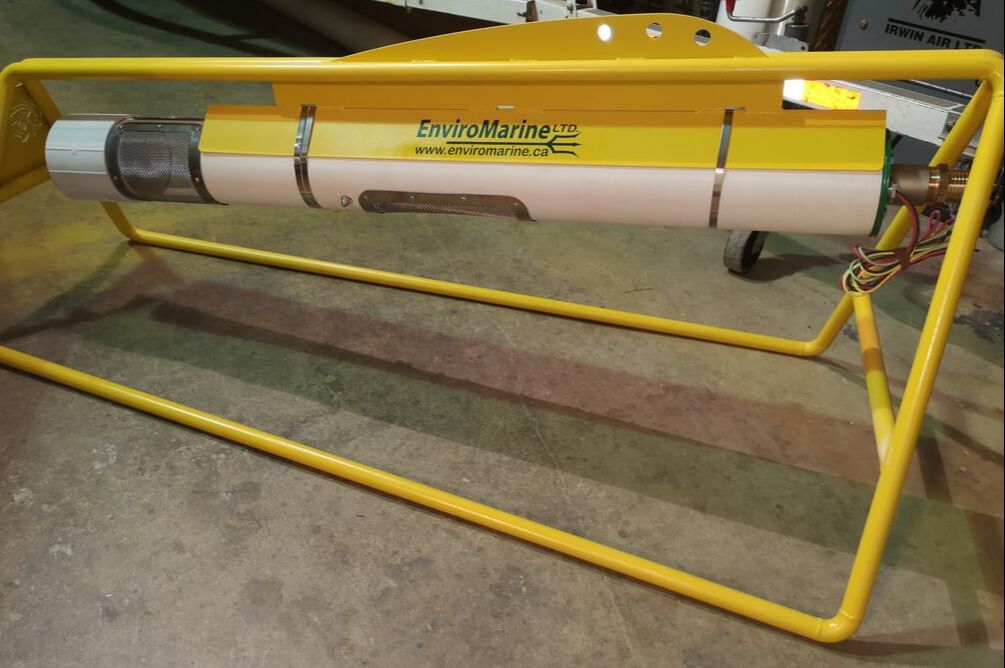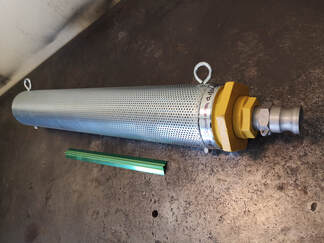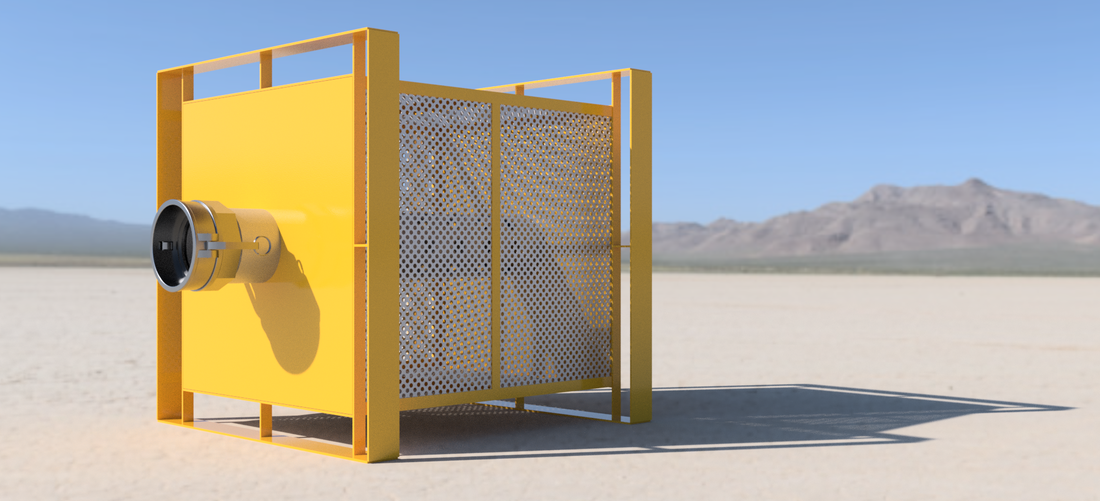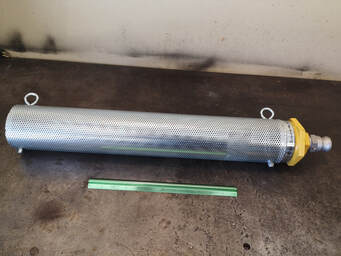We have partnered with Fish Screen Canada to design and fabricate compliant fish screens for your pumping operations fishscreen.ca
It’s hard to get excited about a fish screen... unless you’re a baby fish.

In 1995, the Department of Fisheries and Oceans (DFO) passed a rule that all water intakes in fish bearing bodies of water in Canada be fitted with a protective screen. The purpose of this ruling is to protect fish from harm. In 2020, the Regional District for Central Kootenay made fish screens a requirement for all permanent potable (drinking) water pumps installed in Kootenay Lake. As well, governments at every level are enforcing the use of properly designed fish screens on all water pumps used in construction and industry in fish bearing waters.
DFO “Fish Screen” Design
For a fish screen to be effective, the screen mesh openings have to be small enough so that even baby fish do not get drawn into the water intake. As well, the screen’s total open area has to be large enough to allow adequate water flow to reduce the intake’s suction force allowing an immature fish to be able to wriggle off the screen under its own power. Keep in mind that these factors change based on the volume of the pump's intake draw.
As a baseline, the DFO biologists agreed that the fish screen has to protect down to a 2.5 cm (1inch) fish – which are called "fry" ... as well, the design has to account for fish species that are the weakest swimmers that may be found in the body of water containing the water intake. The Department of Fisheries and Oceans has developed a comprehensive guide outlining the standards to follow for every water intake fish screen.
For example...in the Kootenay Lake district, (and most of Canada), the weakest swimming fish is Burbot (ling cod)... so the screen opening size and the total surface area of the screen have to be factored into the design so that fry size Burbot don’t get drawn into the water intake, and... allows them to be able to wriggle off the screen if they get caught by the intake suction.
Fish screens for in-water potable pumps
The fish screens installed on potable water pumps that are permanently positioned on the lake/river bottom are fabricated by Fish Screen Canada to meet the Department of Fisheries and Oceans standards and are designed to be easily cleaned by a diver. These fish screens are available through us at Kootenay Diving.
Depending on the pump stand design, the standard Fish Screen Canada fish screen can usually be retrofitted onto existing water pumps. Custom fish screens can also be fabricated as required. Perfect for the "do it your self" types as well. If you are upgrading your present in-lake water system - give us a call - we usually have fish screens in stock, boxed and ready to ship.
Inspection and cleaning of potable water pumps that are permanently installed on the lake/river bottom
For potable water pumps that are permanently positioned on the lake bottom, marine growth and sediment will start accumulating on the fish screen’s openings over time. How much accumulation will depend largely on how deep your pump is installed. Plant life accumulations are most noticeable if the pump is situated in the "grow zone" - at a depth where sunlight penetrates and photosynthesis occurs - resulting in the growth of plant life such as algae. However, even when pumps are installed deeper than the grow zone (usually below 20 feet - 6 meters), they will also require periodic inspection and cleaning as suspended particles in the water tend to build up on the screen over time, but the accumulation is usually considerably less and takes longer to occur.
It's important to note that to protect organisms living in the bottom sediment, water intakes have to be positioned 30 cm (12 inches) above the lake/river bottom.
How often should my potable water fish screen be cleaned?
The fish screen cleaning can be completed during a routine inspection of the potable water pump and water line. We recommend that the first inspection/cleaning be done within two to three years after installation. This provides a baseline for your particular installation. By seeing the amount of marine growth present, you will have a better idea how often maintenance may be required.
Portable water pumps - used in construction and irrigation
Portable water pumps used in any fish bearing water also require a fish screen at the intake that meets Department of Fisheries standards. Based on intake flow volume and fish species at risk, these fish screens are custom fabricated by Fish Screen Canada to be compliant. They are designed to be easily deployed and cleaned when required. See photos below.
DFO “Fish Screen” Design
For a fish screen to be effective, the screen mesh openings have to be small enough so that even baby fish do not get drawn into the water intake. As well, the screen’s total open area has to be large enough to allow adequate water flow to reduce the intake’s suction force allowing an immature fish to be able to wriggle off the screen under its own power. Keep in mind that these factors change based on the volume of the pump's intake draw.
As a baseline, the DFO biologists agreed that the fish screen has to protect down to a 2.5 cm (1inch) fish – which are called "fry" ... as well, the design has to account for fish species that are the weakest swimmers that may be found in the body of water containing the water intake. The Department of Fisheries and Oceans has developed a comprehensive guide outlining the standards to follow for every water intake fish screen.
For example...in the Kootenay Lake district, (and most of Canada), the weakest swimming fish is Burbot (ling cod)... so the screen opening size and the total surface area of the screen have to be factored into the design so that fry size Burbot don’t get drawn into the water intake, and... allows them to be able to wriggle off the screen if they get caught by the intake suction.
Fish screens for in-water potable pumps
The fish screens installed on potable water pumps that are permanently positioned on the lake/river bottom are fabricated by Fish Screen Canada to meet the Department of Fisheries and Oceans standards and are designed to be easily cleaned by a diver. These fish screens are available through us at Kootenay Diving.
Depending on the pump stand design, the standard Fish Screen Canada fish screen can usually be retrofitted onto existing water pumps. Custom fish screens can also be fabricated as required. Perfect for the "do it your self" types as well. If you are upgrading your present in-lake water system - give us a call - we usually have fish screens in stock, boxed and ready to ship.
Inspection and cleaning of potable water pumps that are permanently installed on the lake/river bottom
For potable water pumps that are permanently positioned on the lake bottom, marine growth and sediment will start accumulating on the fish screen’s openings over time. How much accumulation will depend largely on how deep your pump is installed. Plant life accumulations are most noticeable if the pump is situated in the "grow zone" - at a depth where sunlight penetrates and photosynthesis occurs - resulting in the growth of plant life such as algae. However, even when pumps are installed deeper than the grow zone (usually below 20 feet - 6 meters), they will also require periodic inspection and cleaning as suspended particles in the water tend to build up on the screen over time, but the accumulation is usually considerably less and takes longer to occur.
It's important to note that to protect organisms living in the bottom sediment, water intakes have to be positioned 30 cm (12 inches) above the lake/river bottom.
How often should my potable water fish screen be cleaned?
The fish screen cleaning can be completed during a routine inspection of the potable water pump and water line. We recommend that the first inspection/cleaning be done within two to three years after installation. This provides a baseline for your particular installation. By seeing the amount of marine growth present, you will have a better idea how often maintenance may be required.
Portable water pumps - used in construction and irrigation
Portable water pumps used in any fish bearing water also require a fish screen at the intake that meets Department of Fisheries standards. Based on intake flow volume and fish species at risk, these fish screens are custom fabricated by Fish Screen Canada to be compliant. They are designed to be easily deployed and cleaned when required. See photos below.
|
Certification of Build
All our fish screens come with a "Certificate of Build" which lists the specifics that environmental inspectors/auditors are looking for to ensure compliance with Section 30 of the Fisheries Act. This includes a signed hard copy to keep on file in the office as well as a laminated copy suitable for field inspections. |
Call for a no obligation quote 1-250-254-5076 or email [email protected] or visit fishscreen.ca

